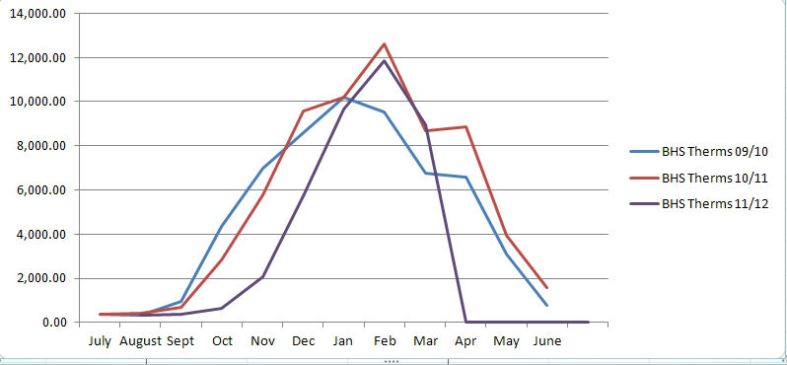“What gets measured, gets managed.” – Peter Drucker
The link for Brunswick School Dept. Energy, sorry but Google documents has butchered my Excel file graphics. If anyone finds it to be of value, please email me and I will send the actual file. I would suggest that you scroll towards the bottom and look at the charts that show the 3 years of activity. # Note, HBS is a new school building.
As a facility manager, “in my opinion,” you need to know what it costs to operate any and all buildings on at least two levels. There are times when you will need to evaluate just how efficient your building’s systems are on a cost per square foot basis. Without a baseline and continuous tracking how will you ever know if your building improvements and energy saving measures are worthy of the costs? There is a good chance that you could keep repeating poor energy improvement decisions. If you have no ideas what your energy dollars are going to, how can you establish any priorities for future projects? Of course the “benchmarking” comparisons should be based on equal buildings or year after year comparisons. It isn’t a good benchmarking comparison to have a building that meets current ASHRAE, fully ventilated, measured against a building that only offers ventilation by open windows. That also brings us to evaluate a decision on a comfort basis VS the dollars saved basis. By bringing a building up to current standards of ventilation there is a good chance that your energy costs will increase.
The 2nd consideration for understanding a building’s efficiency is how much does this building cost us per square foot? In recent years there were many schools that have had to face shut down across the country. With student enrollments decreasing towns have had to look at bottom lines and the cost to operate a building as measured by the amount of students or employees. In my past life I had an administrative building that cost $522.00 per occupant per year and that was compared to $89.00 per occupant per year in an elementary school. With the new school building, capital construction program being reduced in recent years, should communities be looking at tucking non-education functions into school buildings so the systems costs can be shared and minimized?
Along with that thought, is efficiency the only consideration here? Just like everything else, these decisions are never that simple. At first glance it may seem simple but there are many factors that come into play. Safety, security for the staff and students for one, do we want the general public visiting the administration, sales people and such, that come and go? I do believe one thing, communities will have to rethink how they plan for replacing or updating their school buildings.
